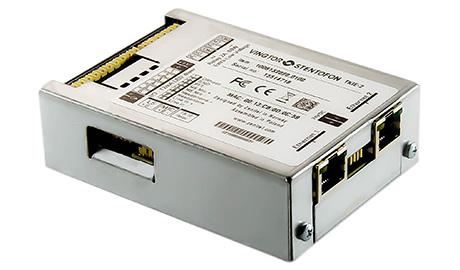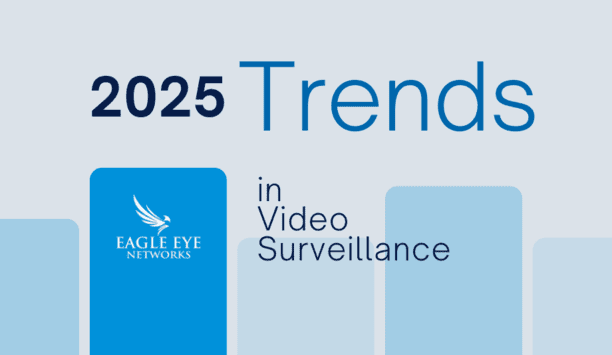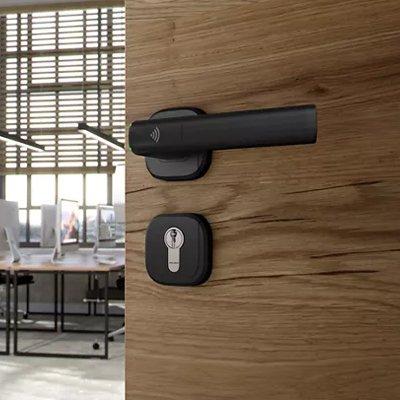Greater connectivity, security software enhancements, more customisation, and better sound quality are some of the enhancements driving the intercom market.
An advantage now offered on Code Blue’s emergency speakerphones include self-diagnosing software that monitors the status of the phones and their components — microphones, buttons and speakers — and delivers instant notifications if there is ever an issue. Code Blue phones also come with full duplex capabilities with echo cancelling, sometimes known as open duplex, which allows the caller and first responder to communicate simultaneously and eliminates buzzing and static.
IP-based networking systems
Code Blue also builds its phones to open standards like Session Initiation Protocol (SIP), which allows calls to be easily processed with a wide variety of systems and software solutions, says David Fleming, Chief Design Officer for Code Blue Corp.
Networking has impacted the intercom market, with the advent of IP-based systems. The corporate network now makes it possible to share information and to control units from a few yards to thousands of miles away, according to Bruce Czerwinski, U.S. General Sales Manager, Aiphone Corp. For example, central command centre guards can monitor and allow entrance to any networked satellite or unmanned facility 24/7.
Multi-site communications
Networks have also spawned mobile apps that allow roaming guards to use smartphones and devices to maintain total control of an intercom system while away from the master station and on the Wi-Fi. And network paging is another recently added communications tool, valuable for routine announcements or emergency instructions.
"Voice is becoming the killer app for serving the safety and security needs of employees and customers" |
“We’re now able to offer large-scale multi-site communications using intercom systems,” says Czerwinski. “That’s not just connecting a few buildings on opposite sides of a campus quad, but all those separated by state lines, even across the country.”
As markets and customers served by intercom products continue to evolve with new needs requiring new solutions, intercom companies continually poll the market and develop new and interesting solutions for these needs.
All-in-one physical access control solution
Because intercom manufacturer 2N’s products are often used as part of a physical access control system, convenience and security are key attributes. Bluetooth technology will be employed heavily. 2N has just introduced its Bluetooth access control reader for both standalone access control and integrated into 2N’s VERSO door station.
The technology is based on Bluetooth Low Energy (BLE) technology, which offers long-range detection (up to 10 metres), low energy consumption and ‘banking’ level security. It can be combined with other technologies — near field communication (NFC) and radio-frequency identification (RFID) — for an all-in-one solution.
Mobile video app for door intercoms
2N has also launched a mobile video app/service. It enables a consumer’s smart device to be used as an interface to the door intercom, allowing video calls from anywhere in the world, door access control, and as an ‘always on’ video and audio surveillance system. Notifications can be launched automatically; for example, if someone approaches the homeowner’s door, porch, or surrounding area. A low-cost all-in-one door station — Base — has been released for the residential and small business space, including HD video, audio, and door control but in a simpler-to-install and lower-cost format.
 |
| Zenitel’s Customer Intercom Station Kit enables customers to build their own stations |
In the spring, 2N is releasing a Z-wave networked door control solution that’s easy to install and extends the reach of an access control system.
Off-the-shelf communication devices
Jim Hoffpauir, President of Zenitel North America, says the intercom company offers a choice of either off-the-shelf communication devices or components to enable customised stations to be built based on a customer’s aesthetics or form and/or function needs. Users also must be heard and be understood, says Hoffpauir.
“We spend millions of dollars in research and development on the intellectual property that defines and sets the standard for intelligible voice audio in the communications industry,” he says. “And we focus on embedding that capability with strategic alliances in access control, video and unified communications.”
“Voice is becoming the killer app for serving the safety and security needs of employees and customers,” says Hoffpauir. “We want to create new interoperable solutions such as our networked HD Video Door station that acts as a communication device as well as an access control station.” It has two-way communication for 24/7 video identification and support for IP phone or unified communications through SIP.
Intelligible critical communications solutions
Zenitel’s Call Access Panel manages intelligible critical communications through a security operations centre or control room. The panel has a small footprint with pre-programmable buttons for instantaneous emergency or mass notifications to all intercom stations or IP public address, alarms, or horns. And it is SIP-compatible for unified communications.
Changes in hardware and software are transforming the intercom market, as are changes in how systems are combined and configured.
There is also a trend toward more discernment in terms of audio quality and system performance. Including an evaluation ‘scorecard’ in a request for proposal (RFP), for example, can ensure there is a clear way to evaluate systems being considered. “We are teaching the market there can be a legitimate scorecard on intelligibility,” says Dan Rothrock, SVP of Global Strategic Alliances, Zenitel North America. “You may not know you have bad audio until something bad happens, and it’s too late.”











































